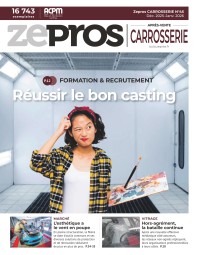
Hutchinson: “We were expecting an acceleration in growth”

The French manufacturer believes that 2022 was less prosperous than expected given inflation but believes that it has its impact limiter on the customer side, as explained by Eric Leroy, automotive aftermarket director, and Benoît Mérigaud, head of French sales.
Where do you expect to end 2022, in terms of value and volume?
Éric Leroy: We saw a good post-Covid recovery in 2021 and this year we were expecting an acceleration in growth, but the Ukrainian conflict has caught up with us. We immediately stopped all business with Russia. The conflict is also strongly affecting neighbouring countries, which have experienced an unexpected slowdown. At the same time, increases in energy and raw material prices weighed on the production costs of our factories and on our purchase prices. In addition, shortages have generated tension in the supply chain. Finally, high inflation has generated a decline in the purchasing power of car drivers, who have had to make choices in their expenditure. So, 2022 has been less successful than expected.
Benoît Mérigaud: Customers are increasingly moving towards entry-level, low-cost products. Brand appeal remains important for vital functions such as distribution, but on other product lines it is different.
What levers do you have to counteract the consequences of inflation?
E.L.: Energy and raw materials have undergone massive increases. In a very competitive market, it is difficult to increase prices suddenly, but a business must be profitable. So, we have put a savings plan in place to limit increases for our customers. We negotiated hard with our suppliers. However, after years on a downward trend in prices, we are now clearly on an upward trend, and we have had to pass a significant part of them to our customers. But to say that an OE manufacturer uses distributors as a variable to make ends meet is not true. We cannot afford to ignore increases in original equipment given the sharp increases in energy and raw material prices. Having said that, the aftermarket is highly competitive, we have to be competitive while being profitable.
What changes does the move to electric mobility imply?
E.L.: We believe that the independent aftermarket is more or less okay for the next ten years, due to the existing ICE engine fleet. The European Union’s decision to ban CO2-emitting ICEs in 2035 is already having an impact on OE, which is producing more hybrid and electric vehicles. ICE vehicles will be less and less welcome in large cities, while they will probably remain essential in the countryside.
B.M.: Distributors have a lot of questions about electric, even if we still have good years of ICE sales ahead. But we must show them that we have the solutions to react to this change and help them negotiate it. We are already working on specific parts dedicated to electric vehicles.
Lire la version française : Hutchinson : «Nous attendions une accélération de la croissance»










